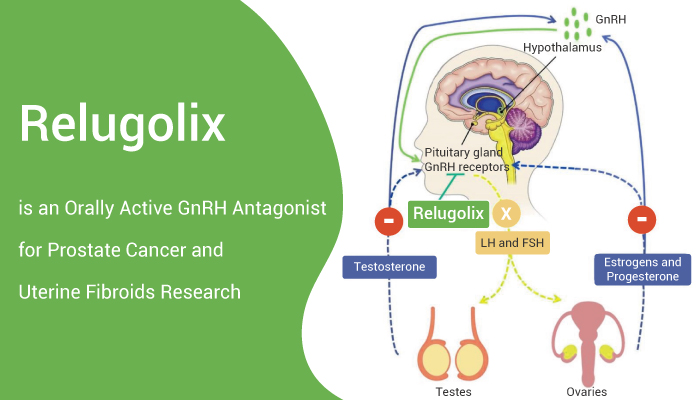In humans, the hypothalamic-pituitary-gonadal (HPG) axis is critical for reproduction and the expression of sexual characteristics. The central regulator of the HPG axis is gonadotrophin-releasing hormone (GnRH). GnRH, a hormone made by a part of the brain called the hypothalamus, is the key regulator of the reproductive axis.There are two isoforms of the GnRH peptide, GnRH-I and GnRH-II. And their effects are exerted by activation of the classical GnRH1 receptor (GnRH1R), which belongs to the rhodopsin G protein-coupled receptor (GPCR) family. The GnRH peptide can activate the GnRH receptor through the heterotrimeric Gq protein pathway. This in turn initiates the reproductive hormone cascade and releases gonadotropins: follicle-stimulating hormone and luteinizing hormone. The gonadotropins act on the gonads to stimulate gametogenesis, gonadal cell proliferation, and production of the gonadal steroids.
Disruption of GnRH receptor function disrupts reproduction and mutations of the GnRH receptor gene disrupt or delay pubertal development, resulting in congenital hypogonadotropic hypogonadism (cHH). Agonist binding to the GnRH receptor activates the Gq/11 family of heterotrimeric G proteins. Activated GTP-bound Gαq/11 subunits activate phospholipase Cβ, which catalyzes production of the second messengers diacylglycerol and inositol trisphosphate, which initiate the cellular signaling pathways that culminate in gonadotropin synthesis and secretion.
Relugolix (TAK-385) is a potent, orally active, nonpeptidic GnRH antagonist
Relugolix possesses high affinity and potent antagonistic activity for human receptor and monkey receptor compared with TAK-013 (HY-100209). However, Relugolix displays a 30000-fold decrease of binding affinity for the rat receptor. Relugolix is effective in sex-hormone-dependent diseases, such as including endometriosis, uterine fibroids and prostate cancer et al. In male hGNRHR-knock-in mice, Relugolix significantly decreases the testis weight and reduces the ventral prostate weight. In female hGNRHR-knock-in mice, Relugolix induces constant diestrous phases in all mice within the first week, and significantly decreases the weights of ovaries and uteri at this dose after 4 weeks. Oral administration of Relugolix exhibits a good pharmacokinetic profile.
All in all, Relugolix is a potent, orally active, nonpeptidic GnRH antagonist for prostate cancer and uterine fibroids research.
References:
[1] Yan W, et, al. Nat Commun. 2020 Oct 20;11(1):5287.
[2] Markham A. Drugs. 2019 Apr;79(6):675-679.
